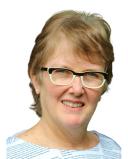Creativity
How to Triumph Over the Blank Page
Creativity begins with an idea, and then a trip to the craft store. Then what?
Updated July 13, 2024 Reviewed by Margaret Foley
Key points
- Fear of the blank page prevents the artist from getting started.
- Focus on the process, not the product!
- Start in the middle, not the beginning. Then you aren't starting, you're just moving forward.
When people know you are a writer, they often give you writing-related gifts. Journals. Pens. Books. Books. And more books! And did I mention journals?
The same is true for any hobby, craft, or activity. When your friends and family learn you're interested in cake decorating, they give you books, metal decorating tips, prepared fondants, and paste and gel food coloring. They learn about your newfound interest in watercolor and gift you paper, paints, and brushes.
No matter what the hobby or craft, one can always use more of its tools.
Friends and family often give me blank journals. A comedian once said of this book-giving endeavor, “Why are you giving me homework?”
As a professor of writing, I require my students to keep a journal. In these free-write journals, I instruct them to spend the first 10 minutes of class writing to a prompt and about whatever comes to mind.
Professor Peter Elbow wrote a great deal about the benefits of the free-write. “The idea is simply to write for ten minutes… Don’t stop for anything. Go quickly without rushing. Never stop to look back, to cross something out, to wonder how to spell something, to wonder what word or thought to use, or to think about what you are doing. If you can’t think of a word or a spelling, just use a squiggle or else write, ‘I can’t think of it.’ Just put down something” (Elbow, p. 3).
Recently, I’ve started to explore mural painting. After months of fearing the literal blank wall, I’ve recently made great progress. This new art form delights me a great deal. I surprise myself with my ability to blend paints and achieve just the right color. My methods are productive. The more I cover a wall or a flat surface, the more I want to keep this practice of creating visual art, something I've never really engaged in before, partly because my mother was such an accomplished artist, and I feared her criticisms.
I've broadened my education by watching YouTube. And let me tell you, hundreds of fantastic practitioners and teachers share their tips and methods for any art form under the sun.
One inspiring teacher is Danny Gregory. He has courses and classes under Sketchbook Skool. (School, spelled with a K, not a CH.) In many of his videos, he shares and shows his amazing, vibrant, detailed sketchbooks.
I am in awe of artists' sketchbooks.
I want to make beautiful, vivid, colorful sketchbooks, too.
I watched one of his videos in which he outlines some of the basic tools. Of course, I immediately ordered a few of these tools and eagerly awaited their delivery. But, as with many art supplies, you only know what you want—or don’t want—once you hold it in your hands.
Gone are the days when a stationery supply store seemed to be in every other town. Looking at sizes, dimensions, and specifications in a web browser can never substitute for the artist’s tactile evaluation of an item.
I held on to one tiny sketchbook, intending to keep it in my purse, handy and available anytime I wanted to sketch. In addition, I also ordered a variety of tip sizes of Pentel black markers and a cute little set of Winsor and Newton watercolor paints.
I corralled this tiny sketchbook, the markers, and the watercolor set in a TSA-approved size, one-ounce Ziploc bag, and I put that bag in my purse so it’s available anytime I want to capture the moment with a sketch.
I have yet to make a single line on any page of that virgin sketchbook.
Why do we struggle to start creating?
How often do creatives struggle with that first word, a first mark, an opening note, a lump of clay, a piece of board, or a yard of fabric?
The fear of the blank page applies to any art form, any creative act. Getting started takes a lot of work. It’s hard, or as we say here in New England, “Wicked haHd!”
Why?
Why does the artist hesitate?
What are we afraid of?
I wish the answer was straightforward.
One barrier is perfectionism. Even when I argue with myself and provide evidence that supports the absolute fact that no one is good from the beginning and that even masters in any art form make mistakes, I don’t want to mess up—especially in this blank book that provides so much potential.
Another barrier is the potential of the untouched product. Those yards of gorgeous silk bought in Mumbai could be a blouse, a robe, a table runner, or a wall hanging. But with one cut, the possibilities diminish. And what if my vision doesn’t match my abilities? What if I mess up?
Focus on the process, not the product.
How does one start a simple practice of keeping a sketchbook? Try this:
- Open to the middle pages of your book.
- This way, you're not beginning. You’re not hacking vines, moving boulders, or trying to cut a new trail.
- Instead, you are gently easing your way along a well-traveled highway.
- You may not have taken this route before, but hundreds, if not thousands, of others have.
- You are not alone.
- By not starting on page 1, you avoid the newness of this blank page.
Starting is hard, but you cannot finish what you don’t begin.
Gift your favorite artist, or yourself, a sketchbook or journal. And leave them a note of encouragement halfway through.
References
Peter Elbow. (1998). Writing Without Teachers: Vol. Second edition. Oxford University Press.




